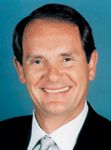- Case-Based Roundtable
- General Dermatology
- Eczema
- Chronic Hand Eczema
- Alopecia
- Aesthetics
- Vitiligo
- COVID-19
- Actinic Keratosis
- Precision Medicine and Biologics
- Rare Disease
- Wound Care
- Rosacea
- Psoriasis
- Psoriatic Arthritis
- Atopic Dermatitis
- Melasma
- NP and PA
- Skin Cancer
- Hidradenitis Suppurativa
- Drug Watch
- Pigmentary Disorders
- Acne
- Pediatric Dermatology
- Practice Management
- Prurigo Nodularis
- Buy-and-Bill
Article
Growth in cosmetic procedures signals paradigm shift
National report — With the number of cosmetic procedures performed nationally rising each year, the line between dermatology and plastic surgery continues to blur as dermatologists devote more time to cosmetic procedures and plastic surgeons embrace less invasive treatments.
National report - With the number of cosmetic procedures performed nationally rising each year, the line between dermatology and plastic surgery continues to blur as dermatologists devote more time to cosmetic procedures and plastic surgeons embrace less invasive treatments.

"The main reason for the increase, perhaps, could be that patients, in general, want to achieve maximal results with no downtime, and for a very low fee," says Peter Fodor, M.D., ASAPS president and associate clinical professor of plastic surgery at UCLA. "Injectables are associated with two of these three goals."

For botulinum toxin, U.S. Food and Drug Administration (FDA) approval for treating glabellar lines has erased much reluctance on the part of patients who initially worried about the material's toxic potential.
"Once Botox gained FDA approval," he says, "patients became more liberal about requesting it."

Compared to prior years, "Cosmetic procedures, in general, are more readily accepted. They've really come out of the closet," Dr. Fodor says.
Media involvement Increasing media coverage, particularly from makeover shows, has taught the public that, "There are other procedures beyond facelifts available," adds Ben M. Treen, M.D., a Greenville, S. C. -based solo practitioner whose cosmetic practice has grown between 10 percent and 20 percent over the past two years.

The American Academy of Dermatology (AAD) takes no official position regarding ASAPS research.
But based on a now 2-year-old AAD member survey, "We know that on average, dermatologists spend about 12 percent to 15 percent of their practice time doing cosmetic work, either surgical or nonsurgical procedures," says David A. Pariser, M.D., AAD secretary-treasurer. "That creates a significant worry for the specialty of medical dermatology. Because the people who do more cosmetic work tend to be younger dermatologists, it is one of the reasons why we feel there is now a workforce shortage in medical dermatology that will increase in the next handful of years."





